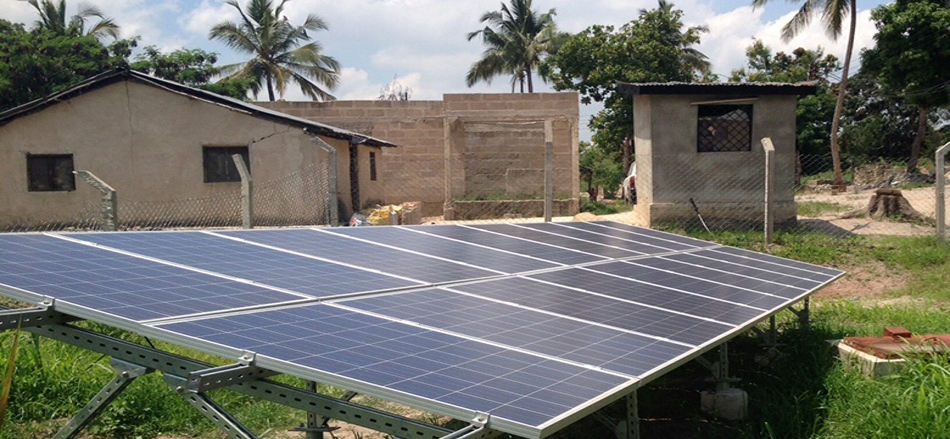
OFF Grid Stand Alone PV System
A stand alone photovoltaic (PV) system is an electrical system consisting of and array of one or more PV modules, conductors, electrical components, and one or more loads.
This System is made up of a number of individual photovoltaic modules (or panels) usually of 12 volts with power outputs of between 50 and 100+ watts each. These PV modules are then combined into a single array to give the desired power output.
A simple stand alone PV system is an automatic solar system that produces electrical power to charge banks of batteries during the day for use at night when the suns energy is unavailable. A stand alone small scale PV system employs rechargeable batteries to store the electrical energy supplied by a PV panels or array.
Stand alone PV systems are ideal for remote rural areas and applications where other power sources are either impractical or are unavailable to provide power for lighting, appliances and other uses.
Stand Alone PV System

While a major component and cost of a stand alone PV system is the solar array, several other components are typically needed. These include:
• Batteries: Batteries are an important element in any stand alone PV system but can be optional depending upon the design. Batteries are used to store the solar-produced electricity for night time or emergency use during the day.
• Charge Controller: A charge controller regulates and controls the output from the solar array to prevent the batteries from being over charged (or over discharged) by dissipating the excess power into a load resistance. Charge controllers within a standalone PV system are optional but it is a good idea to have one for safety reasons.
• Fuses and Isolation Switches: These allow PV installations to be protected from accidental shorting of wires allowing power from the PV modules and system to be turned “OFF” when not required saving energy and improving battery life.
• Inverter: The inverter can be another optional unit in a stand alone system. Inverters are used to convert the 12V, 24V or 48 Volts direct current (DC) power from the solar array and batteries into an alternating current (AC) electricity and power of either 120 VAC or 240 VAC for use in the home to power AC mains appliances such as TV’s, washing machines, freezers, etc.
• Wiring: The final component required in and PV solar system is the electrical wiring. The cables need to be correctly rated for the voltage and power requirements.


